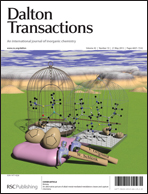Bacterial cell walls have a high density of ionizable functional groups available for U(VI) binding, hence have a great potential to affect the speciation of this contaminant in the environment. The studied strain of the genus Paenibacillus is a novel isolate originating from the Mont Terri Opalinus clay formations (Switzerland) which are currently investigated as a potential host rock for future nuclear waste storage. U(VI) binding to the cell surface functional groups was studied by potentiometry combined with time-resolved laser-induced fluorescence spectroscopy (TRLFS). Four bacterial U(VI) surface complexes were identified: R–COO–UO2+, R–O–PO3–UO2, R–O–PO3H–UO2+, and (R–O–PO3)2–UO22−. The corresponding complex stability constants were calculated to be 5.33 ± 0.08, 8.89 ± 0.04, 12.92 ± 0.05, and 13.62 ± 0.08, respectively. Hence UO22+ displays a moderate to strong interaction with the bacterial surface functional groups. In the acidic pH range (pH 3) UO22+ binding onto the cell envelope is governed by coordination to hydrogen phosphoryl sites. Upon increasing the pH an increasing coordination of UO22+ to carboxylic and deprotonated phosphoryl sites was found. At a pH greater than 7 uranyl hydroxides dominate the speciation. Additionally the bacteria-mediated release of inorganic phosphate in dependence on [U(VI)] at different pH values was studied to assess the influence of phosphate release on U(VI) mobilization.

You have access to this article
 Please wait while we load your content...
Something went wrong. Try again?
Please wait while we load your content...
Something went wrong. Try again?


 Please wait while we load your content...
Please wait while we load your content...